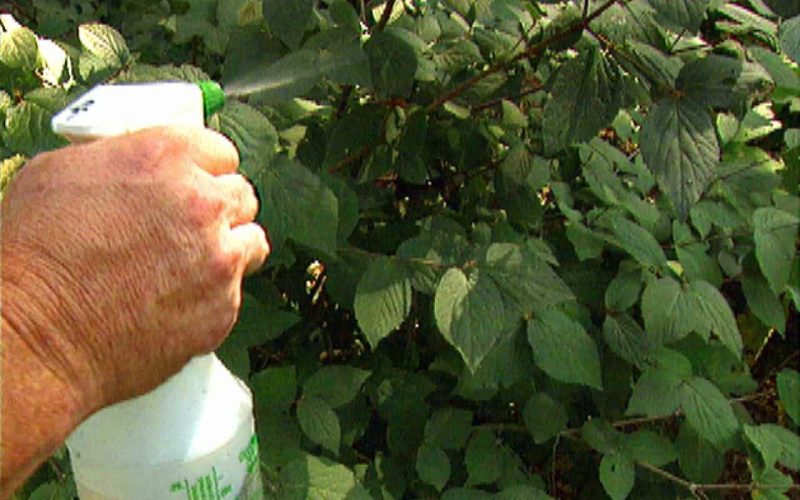Fungi are unicellular or multicellular eukaryotic organisms that cannot produce their own food (heterotrophs) and are essential to the nutrient cycle of an ecosystem.
They reproduce both sexually and asexually and sometimes have symbiotic relationships with plants and bacteria. They include yeast, mushrooms, rusts, molds, mildews, and smuts.
Some fungi have beneficial effects on humans, plants, and animals. Some species of mushrooms are edible to both humans and animals.
They are also helpful in the field of medicine where they are the active ingredients is the production of drugs.
They also form a symbiotic relationship with plants called mycorrhizae, where they colonize the root system of plants, increasing the water and nutrient capacity of the host plant while the plant provides carbohydrates formed photosynthesis for the fungi.
Fungi also have saprophytic qualities that help break down dead organic matter. Although beneficial, fungi are also capable of causing severe damage to plants, humans, and animals.
There are many species of mushrooms like the Death Cap (Amanita phalloides), Autumn Skullcap (Galerina marginata), and the Destroying Angels (Aminata sp.) that are extremely dangerous to humans.
Some fungi have parasitic qualities that destroy plant life and reduce crop yield. They are also many species of fungi that cause diseases in both plants, humans, and animals. The application of fungicides is used to get rid of these harmful fungi.
Fungicides, also known as antimycotics, are pesticides used to eliminate or inhibit the growth of fungi. Fungicides are toxic substances typically used to control harmful fungi that can cause economic damage to crops and poses a threat to domestic animals and humans.
Some plant diseases that fungicides can be used against include;
- Late blight (Phytophthora infestans) in Potato
- Black Pod (Phytophthora palmivora) in Cocoa
- Leaf rust (Hemileia vastatrix), berry disease (Colletotrichum coffeanum) in coffee
- Loose smut (Ustilago nuda), stripe (Puccinia striiformis) in barley
- Rice blast (Magnaporthe grisea, anam. Piricularia oryzae), sheath blast (Rhizoctonia solani, anam. Thanatephorus cucumeris) in Rice
- Rusts (Puccinia spp.), bunts (Tilletia spp.), loose smut (Ustilago spp.) in wheat
- Black and brown (yellow) Sigatoka (Mycosphaerella spp.), Panama disease (Fusarium oxysporum) in banana
- Powdery mildew (Uncinula necator), downy mildew (Plasmopora viticola), Botrytis cinerea in grapes
- Powdery mildew (Sphaerotheca fuliginea), early blight (Verticillium spp.), damping off (Pythium spp.) in vegetables
- Macrosporiosis (Alternaria macrospora), seedling disease complex in cotton
- Leaf spot (Cerospora spp.) in sugar beet
Classes of Fungicides
Generally, there exist different classes of fungicides. They can be classified based on their usage. These include;
- Horticultural and agricultural fungicides applied as dusts or sprays.
- Seed fungicides are applied as protective covering before germination
- Medicinal and pharmaceutical fungicides applied as topical creams or oral medications for domestic animals and humans.
They can also be classified by the following means;
Curative vs. Preventive
Curative fungicides affect fungi after the infection of crops. This infers that they are capable of stopping the growth of diseases on plants after symptoms of fungi infection has been observed.
On the other preventive fungicides work by preventing the plant from getting infected by the fungus. The fungicide must come in contact with the fungus for it to work.
This means that the preventive fungicide must be reapplied on new plant tissues or in the event that the product washes off.
Mechanism of action
Fungicides may work by;
- Damaging the cell membrane of target fungus
- Inhibiting vital processes that enable the fungus to survive
- Disrupting metabolic pathways responsible for cellular respiration of the fungus
Contact vs. Mobile
Contact fungicides are not absorbed by the plant but instead stick to plant surfaces. They work by providing a protective barrier that prevents the fungus from entering and damaging plant tissues.
On the other hand, mobile fungicides are absorbed by the plants, moving from the site of application to other parts of the plants.
Traditionally, Bordeaux mixture, a solution consisting of hydrated lime, copper sulfate, and water have been used as a fungicide.
It is still in use today, along with Burgundy mixture, in the treatment of orchard trees. Examples of organic fungicides include neem oil, milk, citronella oil, rosemary oil, tea tree oil, and bicarbonates.
Additionally, Cadmium succinate and cadmium chloride are used to control fungal infections of turfgrass. Mercury chloride is sometimes used to treat plants like onions and potatoes, although it is incredibly toxic to humans due to its corrosive nature.
Compounds of strobilurin are used in industrial agriculture for the elimination and control of rusts, molds, and mildews.
Other substances that can be occasionally be used as fungicides are methyl bromide, chloropicrin, and formaldehyde, although the application of these chemicals has been banned in many countries.
Harmful Effects of Herbicides
Resistance
As time passes, fungi species develop resistance to the effects of the chemicals in fungicides. Higher rates of fungicide applications may eventually become ineffective.
Globally, pathogen resistance to fungicide appears to be increasing in fruits, vegetables, nuts, field crops, and turfgrass.
Furthermore, when plants develop resistance to a common active ingredient to a fungicide, they will be resistant to other products within the same chemical family.
Impact on Human Health
Certain fungicides can cause irritation to the eyes and skin, while others can irritate the throat and respiratory problems like asthma.
Prolonged exposure to some fungicide can cause visual and neural disturbances. However, the long-term effects of fungicides in humans are still unknown.
According to a study in the journal Lancet Infectious Diseases, published in 2009, the resistance of medication in humans with life-threatening lung diseases caused by the aspergillus fungus may be caused by the application of agricultural fungicides.
Phytotoxicity
This is a side effect of fungicides. Phytotoxicity affects beneficial plants. For example, the fungicide azoxystrobin used on grapes is capable of killing some varieties of apples, while the application of trifloxystrobin is harmful to specific cultivars of grapes.
Impact on the Environment
Fungicides such as chlorothalonil -a commonly used synthetic herbicide – are toxic to aquatic animals like fishes, oysters, and tadpoles.
Surface runoff from nearby agricultural farmlands cause enriches adjacent water bodies with nutrients, increasing the growth of algae and reducing the oxygen content of the water body, a phenomenon known as eutrophication.
Some fungicides such as copper sulfate are harmful to bees. Mercury-based fungicides poison wild birds and livestock.








